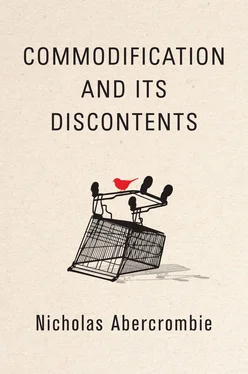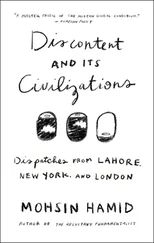As concerns over housing and public health began to coalesce and legislation and action by local authorities began to affect larger and larger areas, there became obvious a need to recognize that the land use of whole towns and cities constituted a single problem. As a result, the first specifically town planning legislation was introduced in 1909. The Act made two important provisions. The first enabled local authorities to prepare town planning schemes for the development of new housing. Although the actual development was to be undertaken commercially, the scheme laid down the framework of roads, open spaces and utility supply and ensured the preservation of important buildings. Since this involved a substantial intervention in the market, the Act also introduced proposals for compensation and betterment. The former compensated landowners for any loss of value caused by the interventions, while the latter involved a tax on the gain in the value of land generated by the town planning schemes themselves. The proposals for a betterment levy essentially came out of a long history of arguments about the injustice of the private ownership of land (George, 1931) and those arguments have continued in the formulation of town planning policy ever since.
Between the closing years of the nineteenth century and the beginning of the First World War, town planning as a movement gradually took shape (Tichelar, 2018b). The term ‘town planning’ was first employed in Britain in the 1909 Act and it was used not only for a set of statutory powers, but also to describe a professional activity with appropriate training. A professional body – the Town Planning Institute – was set up in 1914 and now describes itself as the largest town planning institute in Europe and the ‘UK’s leading planning body for spatial, sustainable and inclusive planning’ (Royal Town Planning Institute, n.d.). Schemes for the construction of entire towns abounded, the best known of which was Ebenezer Howard’s plan for garden cities, originally published in 1902 (Howard, 1965). Importantly, Howard’s proposal combined an aesthetic interest with the provision of healthful housing, and that same combination informed the building of two actual garden cities: Letchworth (begun in 1904) and Welwyn (begun in 1919). Despite the fact that only two were built, the Garden Cities movement remained influential in British town planning in the development after the Second World War of New Towns, mostly seen as a solution to London’s housing problem, and, probably more significantly, in the way in which suburban locations were favoured for new housing throughout the twentieth century.
Legislative activity continued in the interwar period between 1918 and 1939. The need to see the problems of town and country as linked led to a renaming of relevant legislation as town and country planning. The Acts of 1919, 1925 and 1932 covered such topics as provision of state-owned housing, improved building standards and an obligation on local authorities to provide systems of town planning. Helped by the improvement of public transport, the role of local authorities in housing provision was enhanced in this period. Many authorities, most notably the London County Council, took advantage of government subsidies to build extensive council estates, especially in suburban locations. This was significant not least because it marked the ownership of substantial areas of housing by local authorities, agencies of the state, as distinct from philanthropic or commercial ownership.
The conventional view is that, in the interwar period, not a great deal changed despite the profound effects of economic depression. In that view, a great deal of housing was built but attention was drawn away by interest in the preservation of the countryside and the vices of suburban development. However, the significant point is that the idea of town and country planning was sustained. In addition, many of the changes were rather quieter and perhaps not widely announced as town planning. Thus, a legal historian describes the legal changes affecting land between 1922 and 1925 as revolutionary. ‘But it was in the provision of national equipment and infrastructure, the successor to the nineteenth century works, that the power of the state was most evident’ (Jessel, 2011: 176). Furthermore, in the later 1930s there was a greater interest in the notion of planning in general as a response to what was seen as a society in peril from malign social, political and economic forces. ‘The inter-war history of planning, therefore, seems to reflect the wider changes taking place in economic and social thought, largely in response to the depression and to the inability of the unfettered market economy to overcome it. State intervention became respectable’ (Broadbent, 1977: 151; see also Renwick, 2018).
The coalition government of 1940 and, more emphatically, the Labour government of 1945 introduced a set of far-reaching changes in interventions in the market. Although this change in mood owed a great deal to the Second World War, which started in 1939, it had, as I have implied, also been prefigured in the late 1930s. Preparation for, and prosecution of, the war involved a very large extension of the powers of the state and the effects of this extension spread well beyond what might be seen as war-fighting activities. During the war, a set of government and other inquiries and reports paved the way for subsequent action, to some extent motivated by an obvious need for a programme of physical reconstruction. Particularly influential were plans for the redevelopment of British cities, especially the Greater London Plan 1944 (Abercrombie, 1945), which had at its centre proposals for the improvement of housing, the construction of new housing beyond the outer suburbs, the management of transport and the provision of more open space, especially in the development of a green belt around the city. A set of government reports appeared pitched at the national level. The Barlow report of 1940 proposed the further redevelopment of congested urban areas, the dispersal of industries and industrial population from congested areas and the encouragement of a balance of industrial development across regions, together with plans for diversification of industry in each region. The Uthwatt report of 1942 tried to provide solutions to the problems of compensation and betterment. A radical system of land planning entailed allocating land uses to the best outcome, and that implied a potential conflict with existing landowners, affecting the value of their holdings. Land use planning since the beginning of the twentieth century had struggled with the presumed need to compensate owners for taking control of their land and to tax gains in the value of land created by planning decisions. Uthwatt proposed the compulsory purchase of war-damaged land, together with the vesting in the state of development rights in land outside the boundaries of urban development and the creation of a periodic levy on rises in value. Rural planning was the subject of the Scott report of 1942 which dealt with the creation of national parks and green belts as well as improvements in rural services and housing. At the same time, in this period plans were developed for the design and construction of housing on the assumption that a great deal of it would be undertaken by the state in some form.
Legislation in 1943 and 1944 followed from this ferment of ideas which were, it should be remembered, produced by a coalition government. That is, there was a significant measure of consensus across the political parties. The later Act
provided sweeping powers to local authorities to engage in reconstruction and redevelopment. They were enabled to buy land, simply and expeditiously to deal with areas of extensive war damage and areas of ‘bad layout and obsolete development’ – blitzed and blighted land. This was the first occasion when a General Act permitted planned redevelopment on an extensive central area scale. (Cherry, 1996: 108)
Читать дальше












